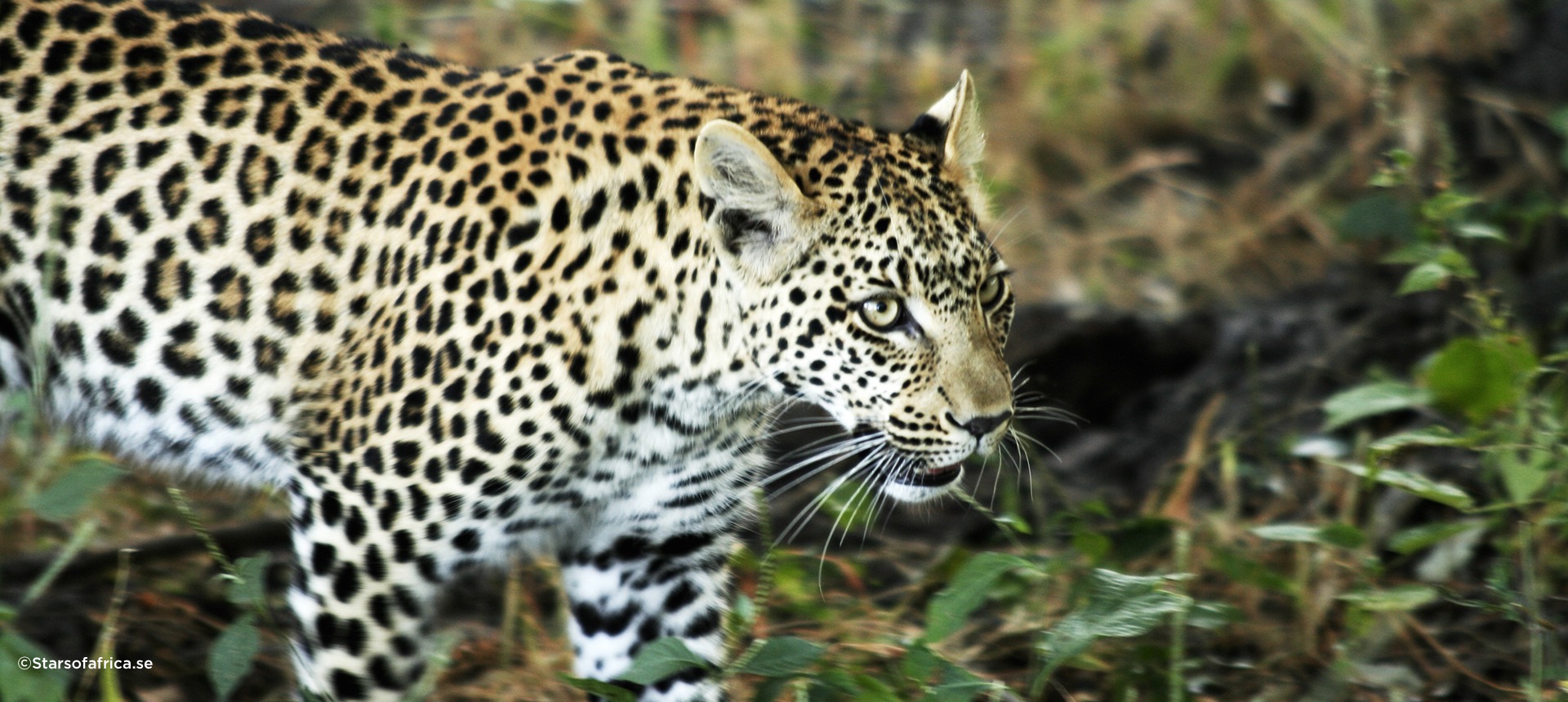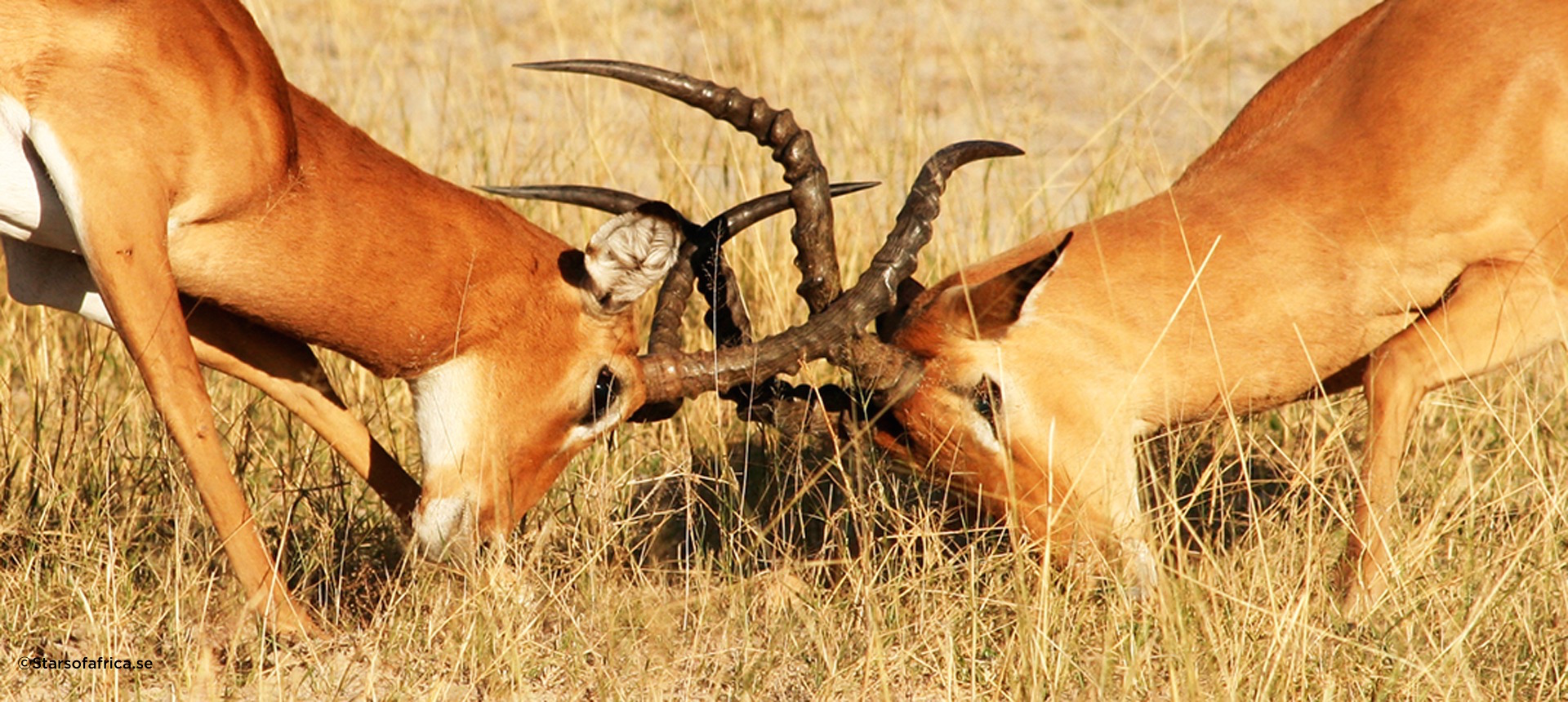BOTSWANA
MAGNIFICENT, VAST WILDERNESS
This is Africa at its best. In Botswana you will find small luxury safari camps in vast private wildlife reserves. The people of Botswana believe in the careful protection of their recources and pristine environments, thus offering high-quality, low-volume conservation-led tourism.
Approximately the same size as France or Texas, Botswana is situated in the heart of Southern Africa. It is a landlocked nation, with Namibia, South Africa, Zambia and Zimbabwe as its immediate neighbors. Botswana, home of the Kalahari Desert, the Okavango Delta and the shimmering saltpans of Makgadikgadi, is sparsely populated, with just over two million inhabitants.
With the exception of the eastern part of Botswana, where the vast majority of people live, the country is flat and arid. Three-quarters of Botswana is technically a desert, which makes the Okavango Delta even more remarkable. It is a wonderful wetland within a desert, getting its waters from rain falling 1,000 km/620 miles up north in Central Africa.
Apart from being the oldest democracy on the continent, Botswana is typical of many African countries. Currently, historians and linguists can identify at least 26 different languages spoken within its borders, with the official languages being English and Setswana. There are cultural differences between the people in different parts of the country, but there is no friction between these communities, and the people of Botswana live together in peace and harmony.
Botswana is one of Africa’s success stories – a booming economy and a stable country. Prior to independence in 1966, from being a British Protectorate, it was one of the world’s poorest countries. Soon after independence, diamonds were discovered in the Kalahari Desert and that kick-started the economy. Sir Seretse Khama was the country’s first post-independence president and he laid the foundations Botswana needed to move forward progressively. The son of president Khama, Ian Khama, is the president today and also one of the country’s conservation heroes. When he became head of the military, he positioned his troops to secure Botswana’s borders from poachers. That decision has resulted in the concentration of game multiplying rapidly. Many of his countrymen owe their jobs and livelihoods to his actions. Botswana has focused on high-quality, low-volume tourism as the best way to create sustainable development that would both employ its people and preserve the environment.
Botswana’s government is well aware that diamonds are not forever, and is laying the foundation to fill the future gap in the economy with small-scale camps and responsible tourism.
Where to stay
SAFARI IN BOTSWANA
A land of dramatic contrasts and infinite beauty, Botswana is blessed with some of Africa’s most stunning subtropical wildlife reserves, filled with a rich array of African wildlife. Botswana is an unforgettable safari destination, offering a combination of big game, birds and spectacular landscapes. This is an exclusive safari destination with tourism strictly regulated. To embark on a Botswana safari is to venture far off the beaten track; the landscapes are never-ending, and the big game encounters are truly wild.
With its remote wildlife areas and vast stretches of sparsely populated land, a Botswana safari is a very different experience than a safari elsewhere in Africa. Whether in the wide expanses of the Kalahari Desert and the Makgadikgadi Pans, or among a network of channels and lagoons in the Okavango Delta, the scenery is distinctive. With 17% of all land in Botswana protected as national reserves, the country boasts an incredible wealth of wildlife and provides the opportunity to explore some of the most beautiful and diverse landscapes on the continent.
THE OKAVANGO DELTA
The Okavango Delta represents one of the world’s greatest mysteries – water in a desert!
The Kalahari Desert is the largest continuous stretch of sand in the world and within it lies the magnificent Okavango Delta, Africa’s largest and most spectacular oasis. The Okavango River, which originates in the highlands of Angola never reaches the sea. Instead, its mighty waters empty over the sands of the Kalahari, creating the unbelievable Okavango Delta, the world’s largest inland delta. As Africa’s third-largest river fans out across the desert sands, it brings life to the otherwise harsh desert land. The huge maze of sparkling channels and lazy lagoons form a lush green haven about half the size of Switzerland.
This amazing delta is home to a diverse eco-system that supports a huge concentration of African game. The broad grassy flood plains are host to a magnificent array of birds and animals. Within this delta environment can be found individual lodges and tented camps, providing exclusive and exceptional Botswana safari experiences.
WILDLIFE
Seventy-five larger mammal species are known to occur in Botswana, and more than 80 fish species have been identified in the Okavango. The large predators are to be found here; lions, leopards, cheetah and spotted hyena. It is also a good place to see wild dogs, especially the Linyanti region which lies to the north: Botswana has one of Africa’s three strong populations of wild dogs. Elephants and buffalo occur in large herds that roam throughout the areas where they can find water. Rhinos are being reintroduced from higher poaching areas in Africa. Antelope are well represented, with impala, springbok, tsessebe and red lechwe all numerically dominant in different areas – depending on the environment.
The Okavango is also one of the best areas for bird-watching, with more than 580 species occurring. Fish eagles, Pel’s fishing owls, herons, kingfishers and endangered wattled crane are among the birds found.
PHOTOGRAPHY
Botswana’s prolific wildlife is legendary, so it is no wonder it is one of the world’s top destination for photography-focused African safaris. Botswana’s staggeringly diverse ecosystems, from the fossilized saltpans of the Kalahari Desert to the emerald waterways of the Okavango Delta, offer diverse habitats and ample opportunities to capture images of Africa’s legendary animals in action. The habitat is diverse with papyrus and islands of palms, figs, jackalberries and timeless baobabs. Purple day lilies and cream-colored night lilies bob above the crystal clear waters with reeds alive with dragonflies and painted reedfrogs.
Read more under the specific camps and lodges with regards to the unique photo opportunities at each safari camp.
CLIMATE
Pula’, one of the most frequently heard words in Botswana, is not only the name of the country’s currency, but also the Setswana word for rain. A great deal of what takes place in Botswana relies on this essential and frequently scarce commodity.
November – March
This period usually sees very high temperatures. But, it is also the rainy season and cloud cover and rain can cool things down briefly. Summer days are hot, especially in the weeks preceding the arrival of the cooling rains. Temperatures in the shade can rise to 38°C/100°F and higher.
May – August
This is the dry season when there is virtually no rainfall. Days are invariably sunny and cool to hot. However, because there is no cloud cover, it is cold at night and in the early mornings. Night temperatures can drop to near freezing in some areas, especially in the southwest.
April through October are generally considered as the choice times to go on safari in Botswana. Those months represent the time following the big rains. However bird watching enthusiasts often find December through May to be particularly rewarding.







